Today the Other Half and I visited the zoo for the annual Monarch Day. Each fall between September and November, monarch butterflies (Danaus plexippus) migrate from our state all the way down to Oyamel fir (Abies religiosa) forests in Mexico. Here’s a migration map from the zoo’s monarch butterfly house display.
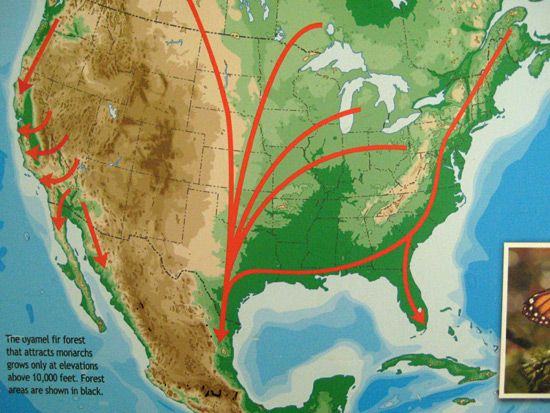
At this educational event for the public, monarchs are tagged with a small sticker on the underside of their wings and released to begin their migration. This coming spring, those who released the monarchs can check for their butterfly’s number through Journey North. This project relies on citizens to report their sightings of monarchs, creating an overall snapshot of the butterflies’ journey.
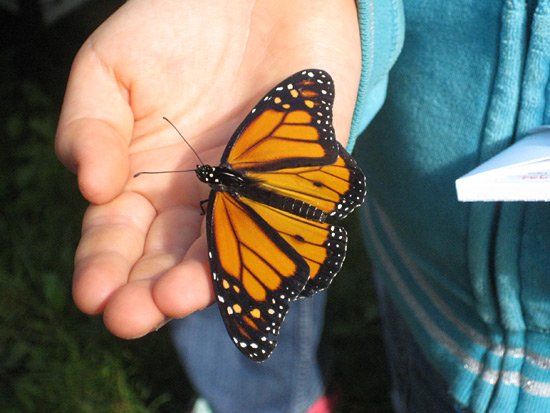
Since Wednesday, the weather has been blessedly cooler than the previous week. This made for some lazy butterflies. They hung around the crowd, orienting themselves and taking in some sun. This little one perched above us in a maple for a bit.
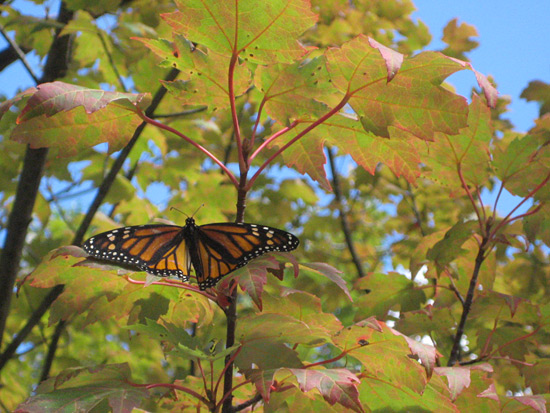
Some of the butterflies wandered over to the pollinator garden on the hillside beside the gathering of people. I was able to get close enough to this one I could see it turning its head from side to side.
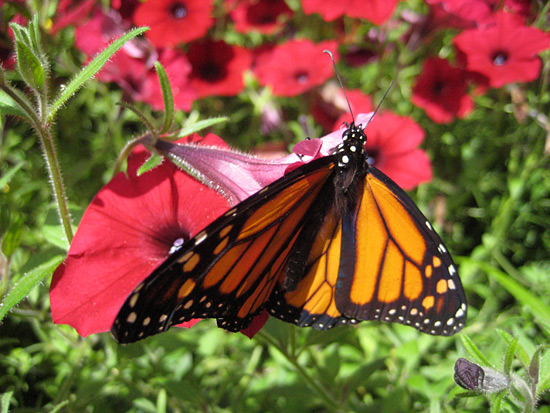
Loss of habitat and pesticides have both contributed to the decline of the monarch butterfly. Though the monarchs enjoy nectar from many different flowers, they will only lay their eggs on the milkweed plant since that is the only food the larvae will eat.
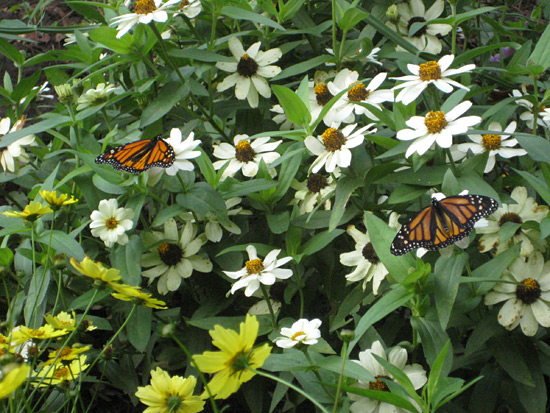
How to Help Monarchs
On the Lot we have both swamp milkweed (Asclepias incarnata) and common milkweed (Asclepias syriaca) planted. Next season we plan to add buttefly weed (Asclepias tuberosa). Planting milkweed and having several pollinator-friendly nectar sources is a great way to get started on helping monarch butterflies.
Buyer Beware
However, be wary on where you purchase the milkweed for your garden. I was upset upon hearing a radio report this past May about systemic insecticides called neonicitinoids being used on milkweed. Customers purchase these plants at large box stores and then end up poisoning the monarch larvae they are trying to help.
The director of Monarch Watch at the University of Kansas, Chip Taylor instructs “Go to a native plant nursery and quiz the manager of the nursery about the use of systemics. And if they can assure you they don’t use any systemics, then buy the plants from them.”
More Monarch Resources
Milkweed Seed Finder (provided by the Xerces Society)